Improving technology in the world of firearms optics has increased optic options available at prices within the budget of the average gun owner. Some of these optics can do double duty – either on a personal defense firearm or a hunting firearm. We’re going to look at two lines of optics from Crimson Trace and talk about pros and cons of reticles and their intended use, and ultimately, how they can do “double duty.”
Sponsored by Crimson Trace
First, let’s lay out some basic terms that every firearm owner should understand in regard to reticles.
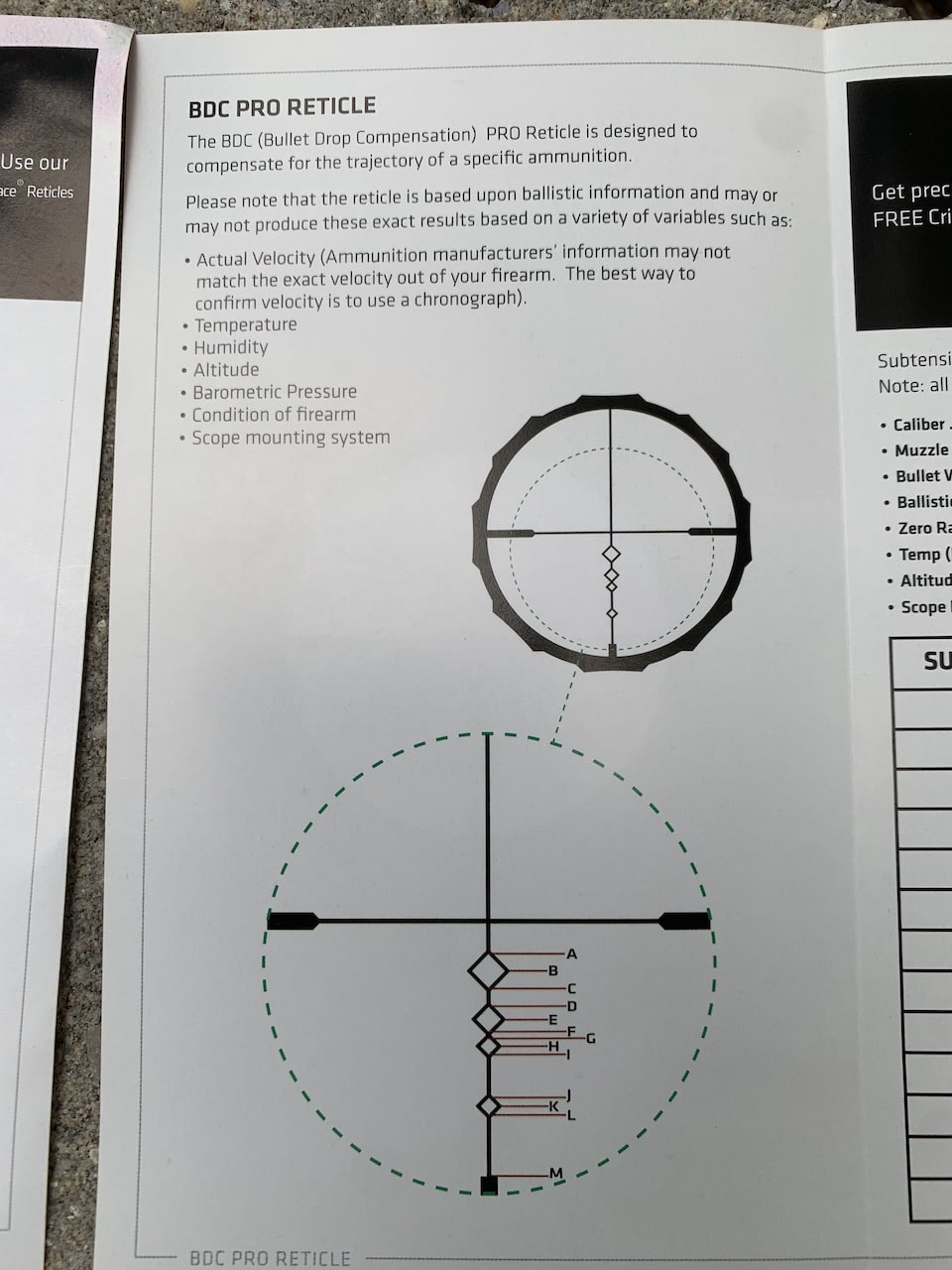
Reticle
The reticle is the part of the optic or scope that allows you to aim. It can consist of several pieces. Sometimes people call it the “crosshairs,” and while most people understand what that means, the term crosshairs refers to a specific style of reticle. Not all reticles have “crosshairs.”
Vertical Stadia
This is the vertical line in a reticle. It’s common to see it run from top to bottom, or center to the bottom.
Horizontal Stadia
The horizontal stadia is the main line going across the center of your reticle. It is usually centered in the optic; think of it like dividing the circle you see horizontally in half.
Underneath that main center line (or sometimes over the center), and crossing the vertical stadia, there can be more lines – usually a series of short lines, and sometimes dots on the sides.
These short lines under the horizontal stadia are often called “hash marks” and the dots are called “windage dots.” There can be full hash marks, and half-sized or shorter hash marks.
Windage dots can be actual dots, squares or different sized dots. The shapes and what they measure or do depends on the way the manufacturer has set up the reticle.
Sometimes the series of hash marks is set up resembling a tree. (Think Christmas tree made of horizontal lines.)
Whatever pattern or unit of measurement is used, think of the hash marks as points on a grid with two axis and they are used to determine where to place your reticle on a target.
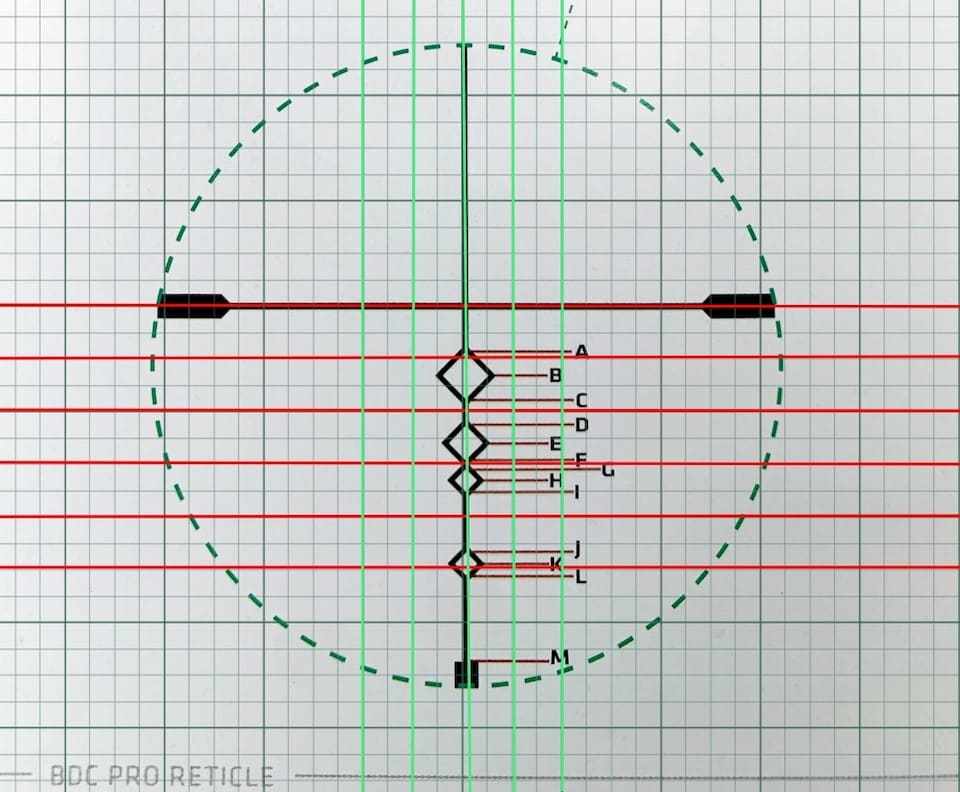
Sub-tensions
Subtensions refers to the measurements or sizes of the parts of your reticle. For example, the center of the reticle might have a dot that measures .5 MOA (minute of angle). The distance from the center dot down to the first full hash might be 1 MIL (MIL is short for Milliradian, an angular measurement that equates to 1/1000th of the distance it travels). or 1 MOA (depending on your scope) and the half-way point between the hash marks might be a .5 MIL measurement. It soundsconfusing, but this is why you need to look at the subtensions on the manufacturer’s diagram and learn what the subtensions in your reticle are. They can sometimes be used to measure targets.
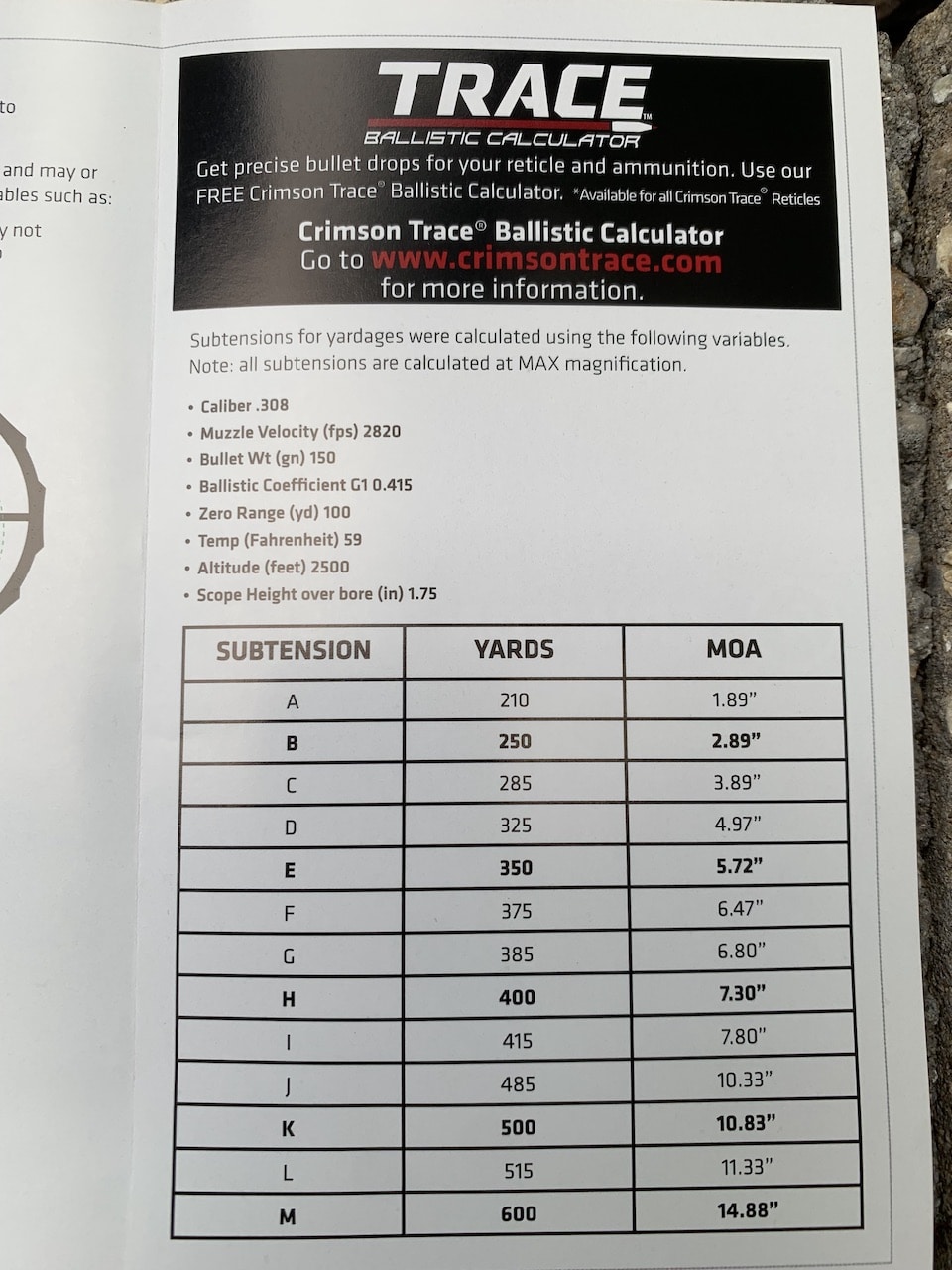
For a more in-depth explanation of MILs, check out Gun University’s primer on MILs. It also offers an excellent tutorial that goes further than this post for an explanation about MOA.
Your optic will have adjustments in either Minute of Angle (MO) or Mil-Radian (MI ). It will typically be written on your optic. Often, you can find this info on the markings on the bottom of your optic or on the scope caps.
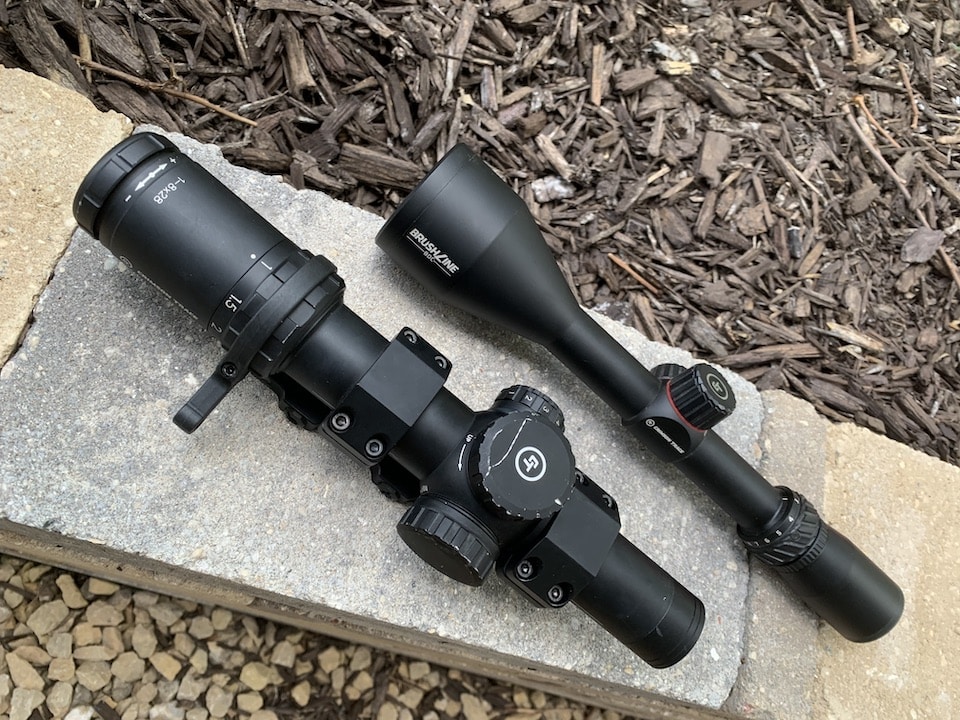
You may wonder how to begin and what makes a good reticle in the first place? Start with the purpose of the firearm. The intended use of the firearm will help you decide on a reticle. Here are some pointers when choosing a reticle that works for you and with you:
A reticle for personal defense needs to be fast. You’re looking to get your aiming point on the target quickly. It’s also great to have a clear field of view. For speed, a red dot is usually the first choice, but the red dot has some drawbacks. It’s not as accurate for longer distances, and there are no other markers within the optic (no stadia lines, etc.) to judge how far you might hold over for distance or lead a moving target. If you want to use your self-defense rifle to hunt, or have the ability to shoot at distance, magnification and a reticle are preferred.
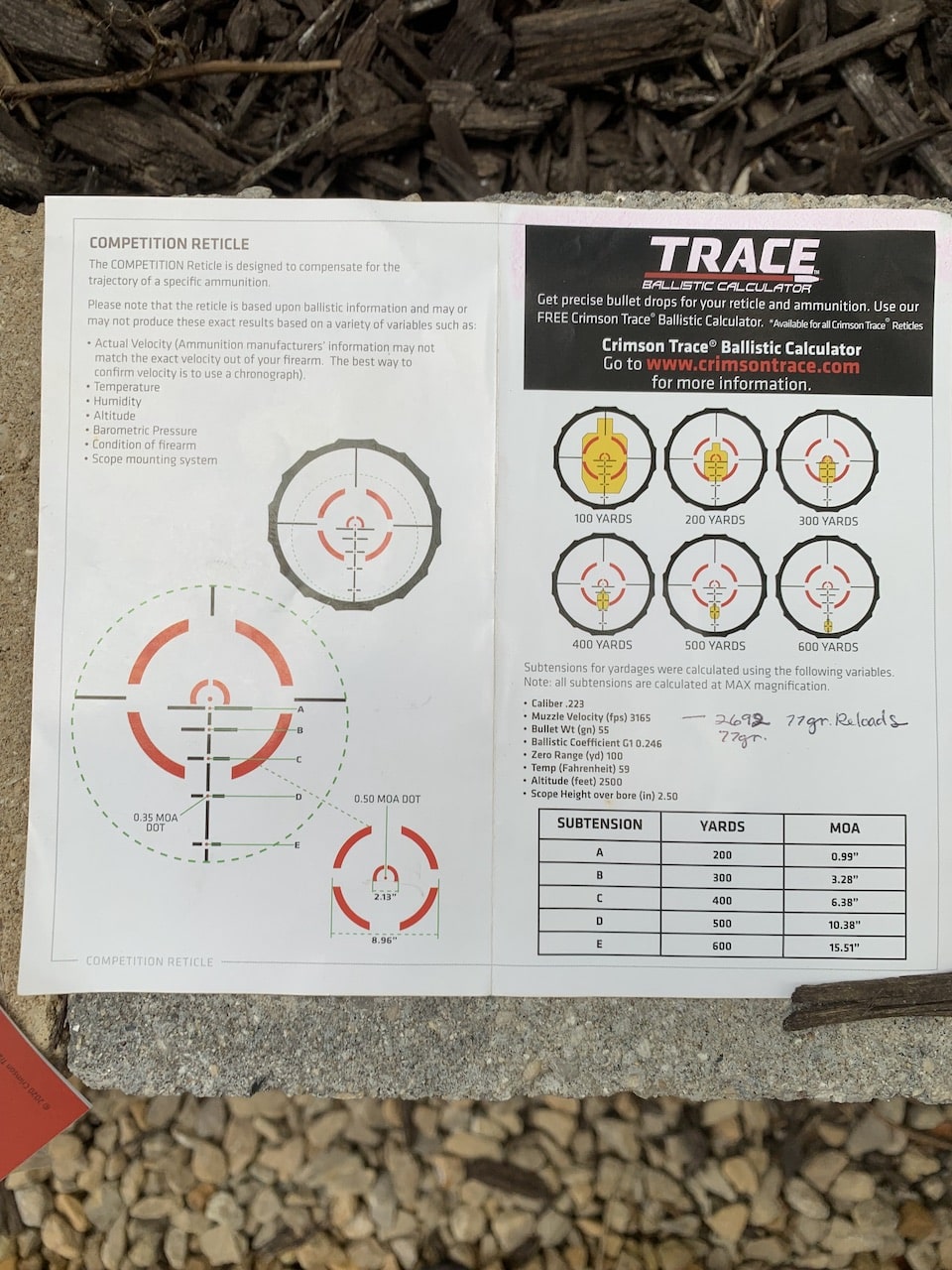
Most personal defense reticles are 2nd focal plane – meaning the size of the reticle stays the same, whether you are “zoomed in” or not. This is for speed and ease of use; a big reticle is easy to see. The other option is a first focal plane reticle, where the reticle “grows” or gets bigger as you zoom in. This is helpful for distance targets and having exact placement of a part of your reticle on a small target. However, for shooting close and fast, the reticle might be much smaller, requiring the user to take more time to aim.
A hunting reticle has a few of the same requirements as a reticle used for personal defense; you want quick acquisition of the target and clear field of view. Additionally, the reticle should fit your purpose and the ranges you plan to shoot. For example, if you look at a deer hunting optic and the reticle has aiming points from 100 to 300, and subtensions that allow you to “bracket” between aiming points, you are going to be positioned for success (if the farthest you want to shoot is 300 yards).
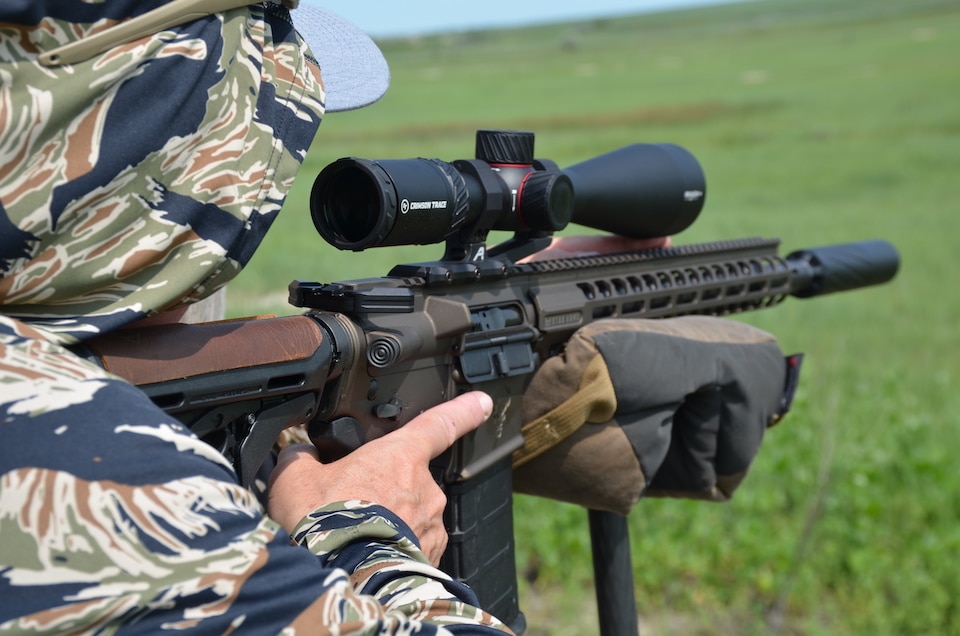
Crimson Trace brought two lines to the optics world with its Brushline and Hardline series — with 50 optics and 17 custom reticles between the two lines. Both have basic models, as well as Pro models. Differentiating the styles of reticles between hunting and “tactical” or practical is a quick sorting of optics by use. Both lines have Ballistic Drop Compensator ( BDC ) reticles and, “Each scope reticle comes pre-calibrated for the ballistic qualities of a specific round.” Each line has options with parallax adjustment, scope caps, and aggressive knurling for ease of adjustment.
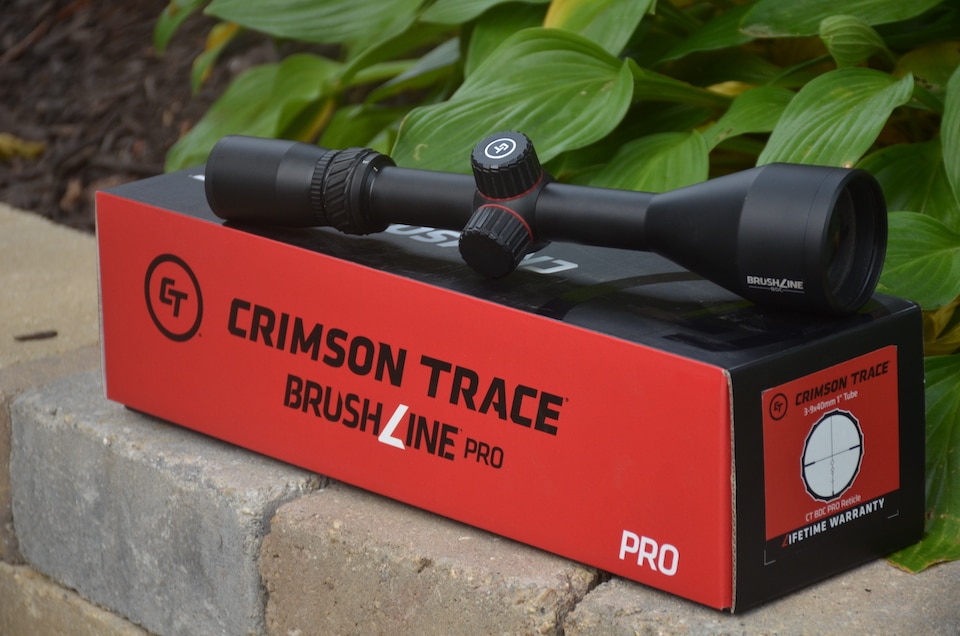
The Brushline optics hold versatility with its unique diamond-shaped aiming points. It’s helpful to know that reticles are protected by patents and that’s why you see brands bringing different shapes to the world of optics reticles. It’s not like brand X is trying to reinvent the wheel when they present a new reticle; they’re trying to create a useful reticle while not infringing on patents.
Crimson Trace’s diamond shape is a nice feature because you essentially have three aiming points with each diamond: the top of the diamond, the center of the diamond held over a target and the bottom point of the diamond. You also have the space between diamonds to “bracket” your target between. The left and right points of the diamond allow you to judge how far left or right you might be aiming, if say, you lead the target or hold for wind.
The diamonds are also fine lines which means that your target behind them is not obscured by the reticle. This helps when aiming for perfect shot placement for ethical hunting.
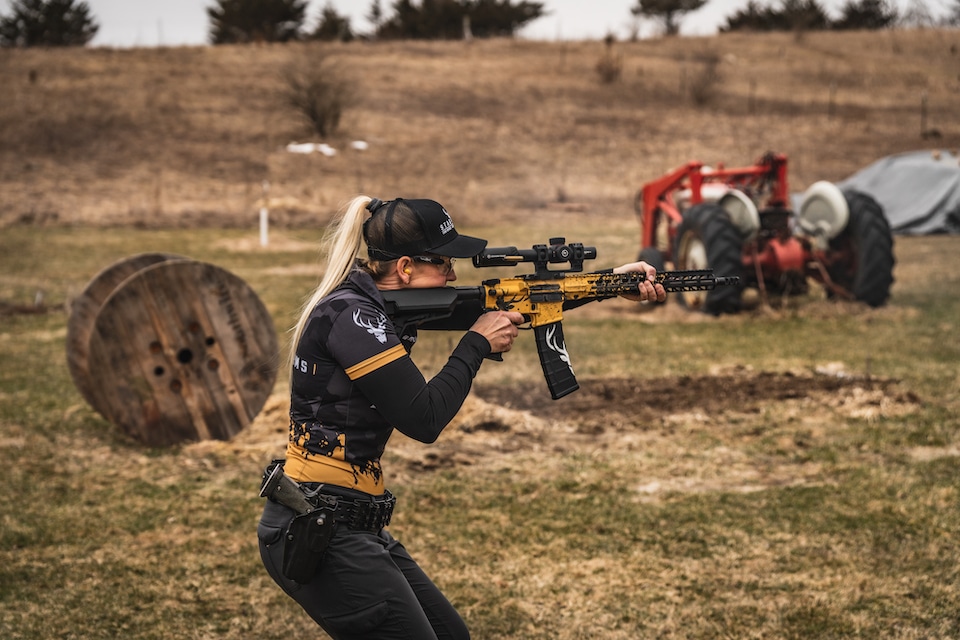
CT’s Hardline optics are geared toward personal defense and have been designed with that in mind. They have options with illuminated reticles, as well as first and second focal plane options. Some of the more complex reticles are great for small targets at distance and judging how far your impacts are off from your aiming point.
What’s good about either line is that while both are suited to a specific purpose (hunting versus personal defense), they can be used for either. It’s just up to you to learn the reticle, and what the optic can do with your ammo at the distances you shoot.
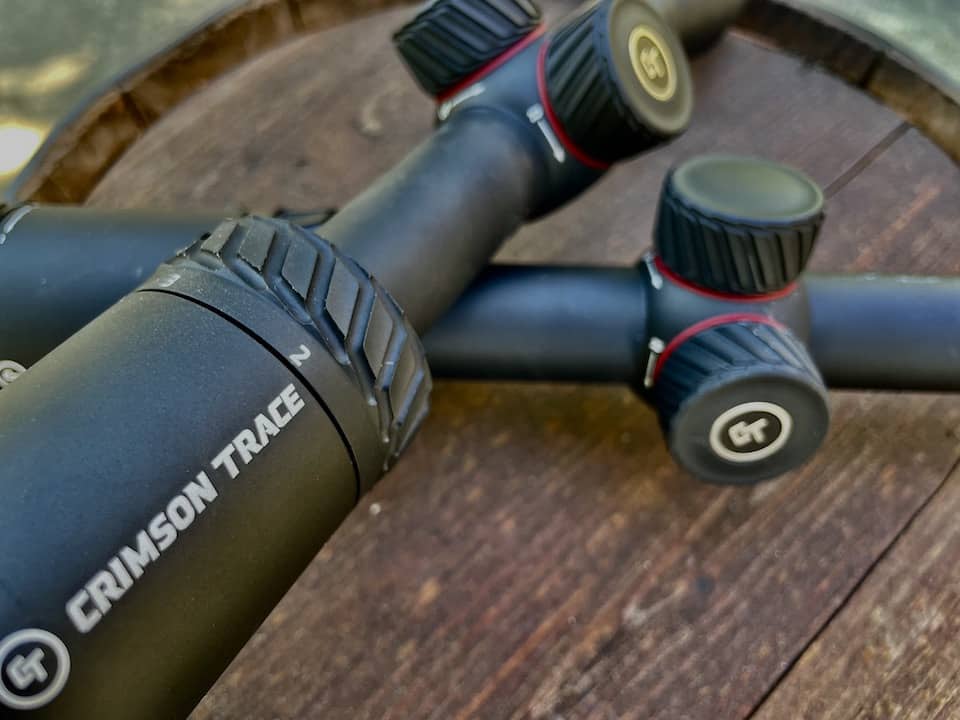
So, in the end, what’s a good optic? It’s the optic you have, you like and that you put in the time to learn. It doesn’t have to cost a fortune or be made from unobtanium. As long as it’s well-made and you can use it to its full potential to hit the targets that you need to hit, that’s all you need.
Visit Crimson Trace to see its full line of optics.
Becky Yackley primarily competes in 3 Gun, USPSA, Bianchi pistol, but has competed in shooting since 1989 in disciplines from service-rifle, to NCAA Air Rifle and Smallbore, air pistol and a little bit of long range rifle. She shoots guns and cameras at competitions around the country, and writes in her fictional spare time. View all posts by Becky Yackley
Great article Becky. I have several CT scopes and they work great for all my needs.